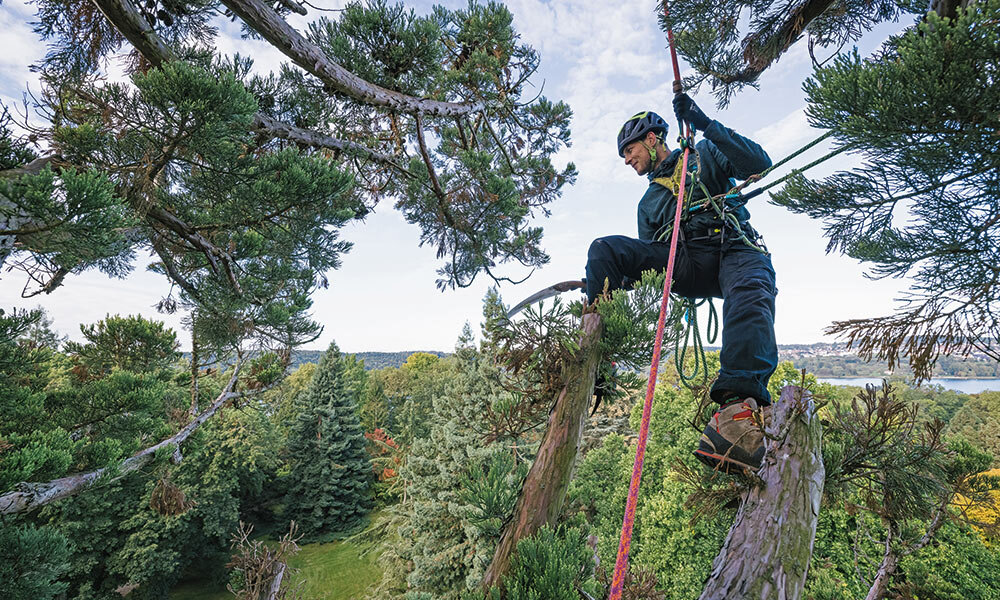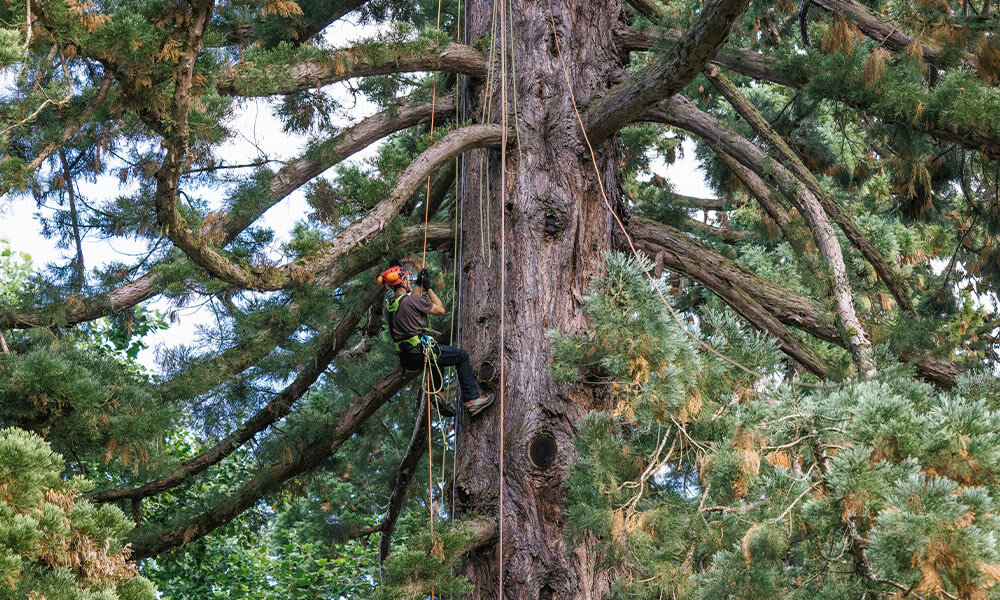In the field of tree care, the rope climbing technique and aerial work platform are purely used to access the actual job, i.e. trimming, tending to, preserving, or felling trees. Despite this though, the rope climbing technique still has certain technical intricacies. And these can make all the difference between “it’ll do” or “luckily that went okay” and safe yet efficient climbing with technical aids that make it possible to defuse or circumvent such situations—or even just improve efficiency in them.
This article is all about directional anchors, which we will try to categorize below to provide you with the best possible overview. Firstly, we (logically) differentiate between the single rope technique (SRT) and the moving rope technique (MRT), and then again within each of these two categories. We will run through the pros and cons of each to help you decide which to use. We regard this overview as an aid that reflects the latest technical advances and possibilities. The use of the techniques should always follow the principles “from low to high” and “from simple to complex”—and naturally occur at your own risk.
Directional anchors used with the SRT differ from those used with the MRT in that they do not affect the rope friction and can therefore also be used multiple times and combined. We divide these directional anchors into two categories: loose directional anchors (group A), which allow the rope to still move depending on the flexibility of the deflection point, and fixed directional anchors (group B), where the rope is secured to the deflection point, e.g. to prevent or minimize the extent to which the anchor points draw together. The section that follows presents a few directional anchors from each category together with their pros and cons.
With regard to the MRT, directional anchors are divided into those with and those without a pulley as this makes the biggest difference to how they can be used. Directional anchors with a pulley should be used if a large area can and should be worked with a lot of ascending and rappelling. Directional anchors without a pulley are ideal if an additional (removable) directional anchor can be expediently installed for the last rope section or if, for example, a better rope angle needs to be achieved for the secondary trunk in the upper crown and the risk of a swinging fall should be minimized.
We would love to have a professional discussion with you and naturally to learn new things from you and your practical experiences. After all, it goes without saying that our list can merely act as an example and in no way presents the full range of gear (slings, carabiners, and pulleys) that can be used.
Sebastian is a passionate single roper who uses this technique much more than Max. He was therefore responsible for this part while Max wrote the MRT section.
Max Soballa
B. Sc. Arboristics
Self-employed arborist
Product developer for M&M Rope Solutions
Splicer and dad


